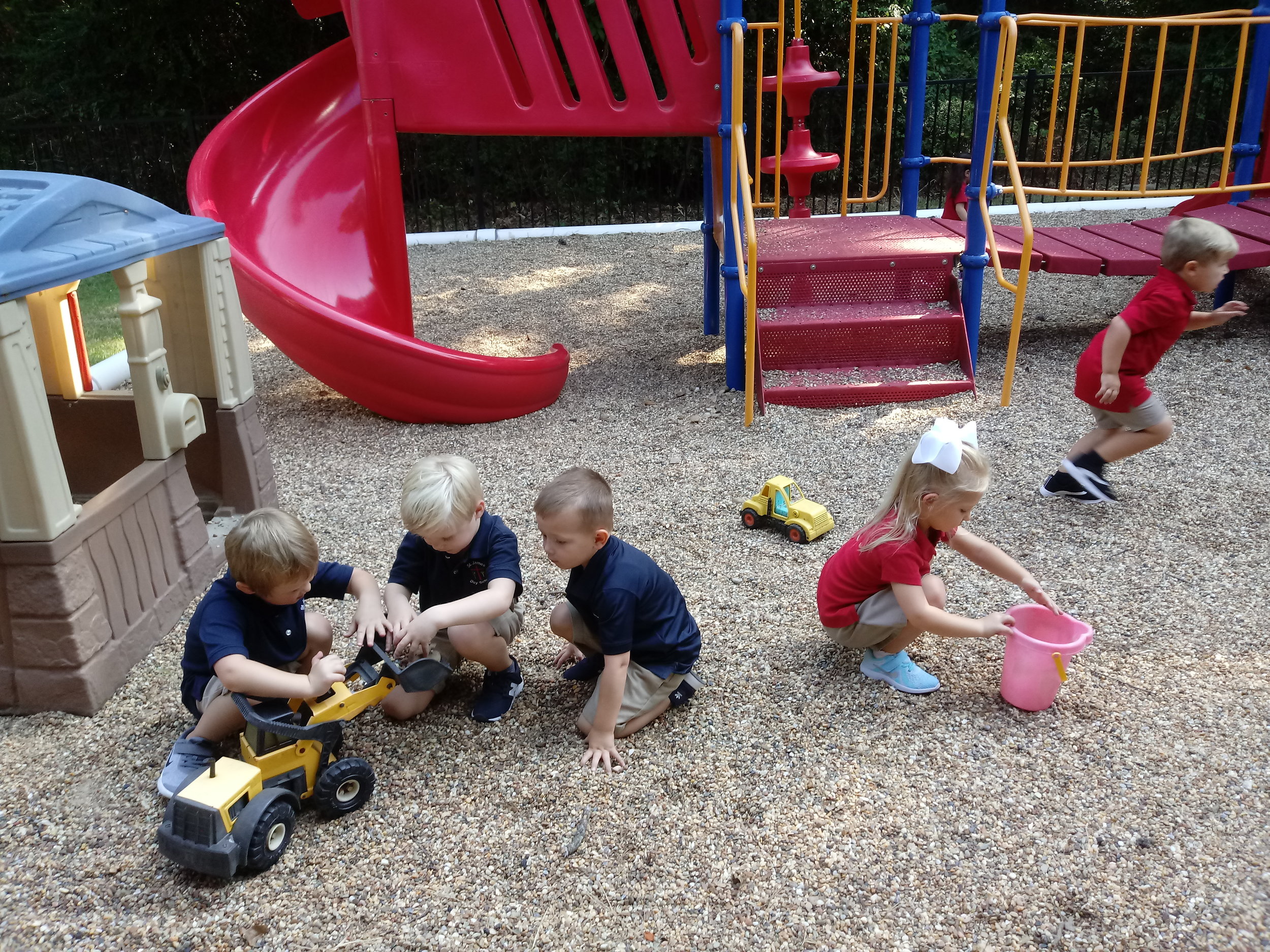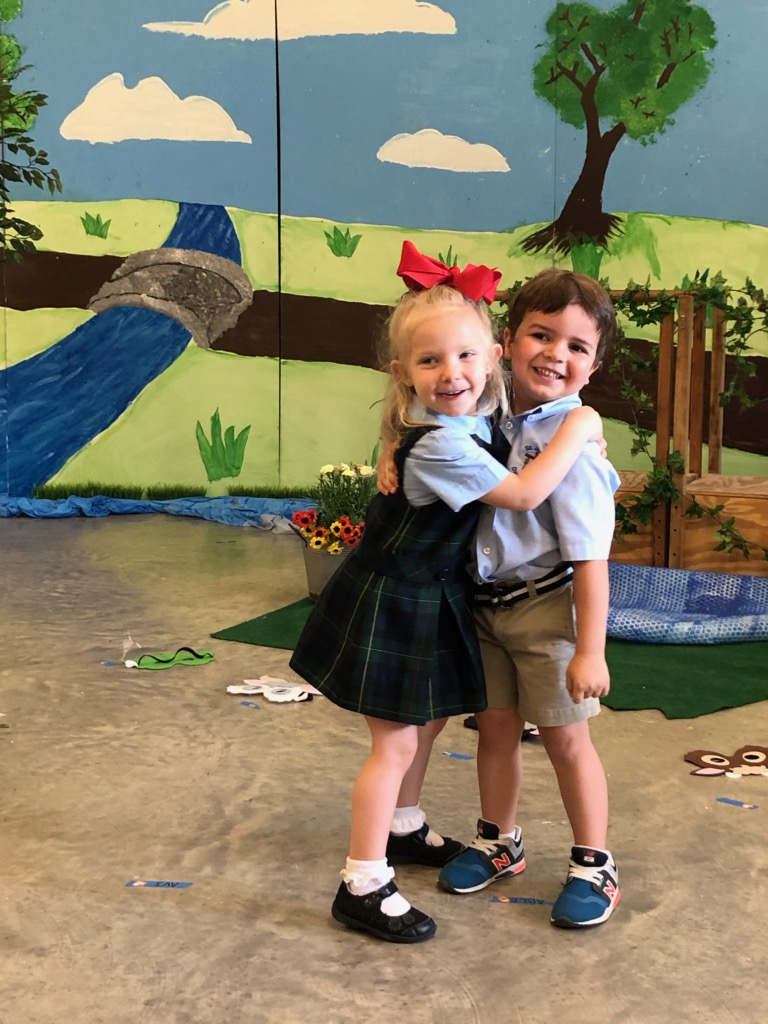During the first week, we focus on “What names we need to know at school?” It's important that we get to know each other and begin building trust and relationships so we can feel safe and happy. To help them feel comfortable at school, we took a tour of the campus and met the Administrative Staff. Being able to establish caring relationships and to enter successfully into ongoing social interactions are essential skills for school and for success in life. We also discussed expectations as well as building a strong classroom family.
The boys and girls loved learning the nursery rhymes: Humpty Dumpty and The Three Little Kittens. These nursery rhymes teach them phonological awareness, or phonological sensitivity, which is the ability to discern the sounds and patterns of spoken language. Phonological awareness is an important skill in learning to read. Children become phonologically aware through experiences such as reciting poems and nursery rhymes, singing, and clapping the syllables of chanted words. They hear the words "wall" and "fall" have the same end sound, just like "ball" and "tall." Then we say these words: "call," "hall," "wall," and "fall." We are learning that these words rhyme because they all end with the "-all" sound.
We also discussed what we could learn from Humpty Dumpty and The Three Little Kittens. Humpty Dumpty is an egg and can be easily broken when mishandled. Once cracked, an egg shell can't be put back together. I asked the students, "Where is Humpty Dumpty, and is it a safe place for him to be?" This led to an entire discussion about safety and making good choices so we stay safe. When asked, “Why did the kittens lose their mittens?” The children said “they lost them because they didn’t take care of them.” This led to a discussion about taking care of our things in the classroom and at home. We talked about where things go in our classroom so we don’t lose them(backpack, folder, lunch box, toys).
While we are doing all these fun things, a lot is taking place. Following instructions, learning to socialize with others, working on gross motor skills, and spatial awareness are some of the skills we are learning without even realizing it.



























































